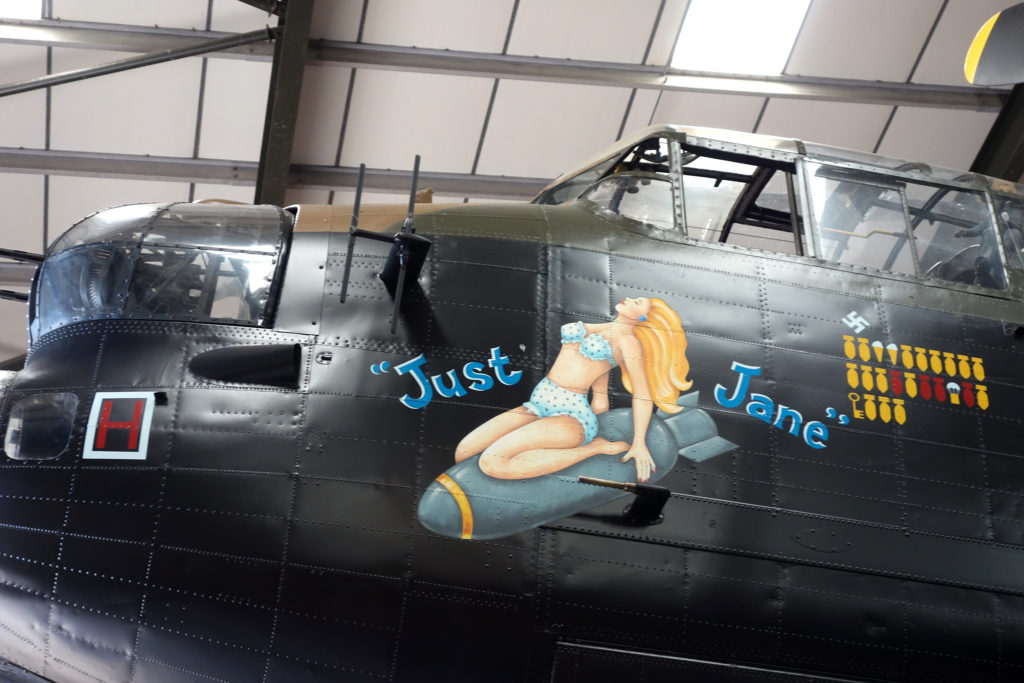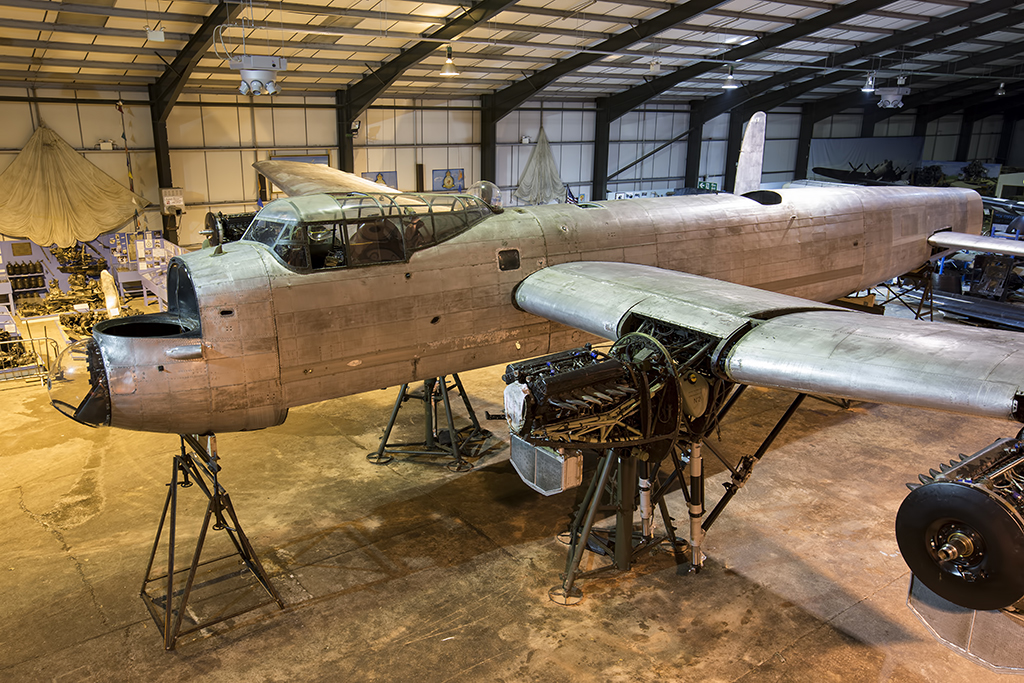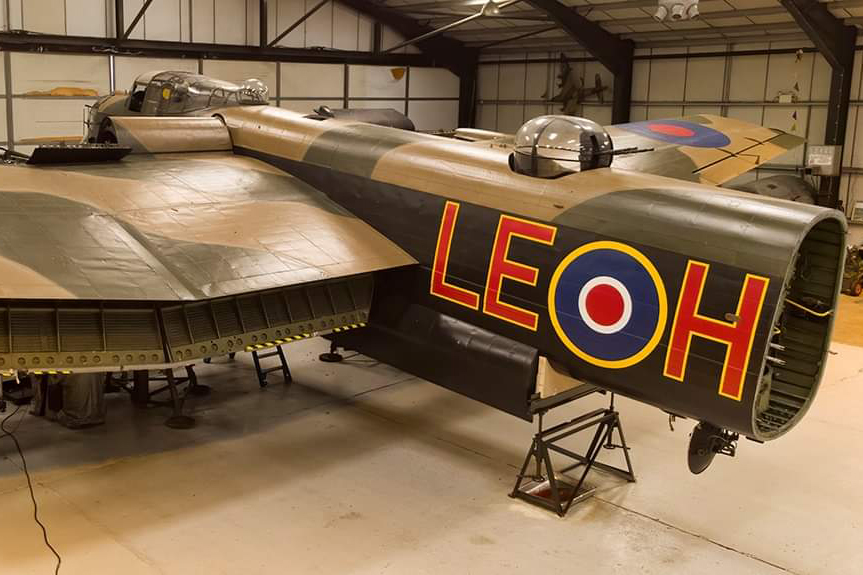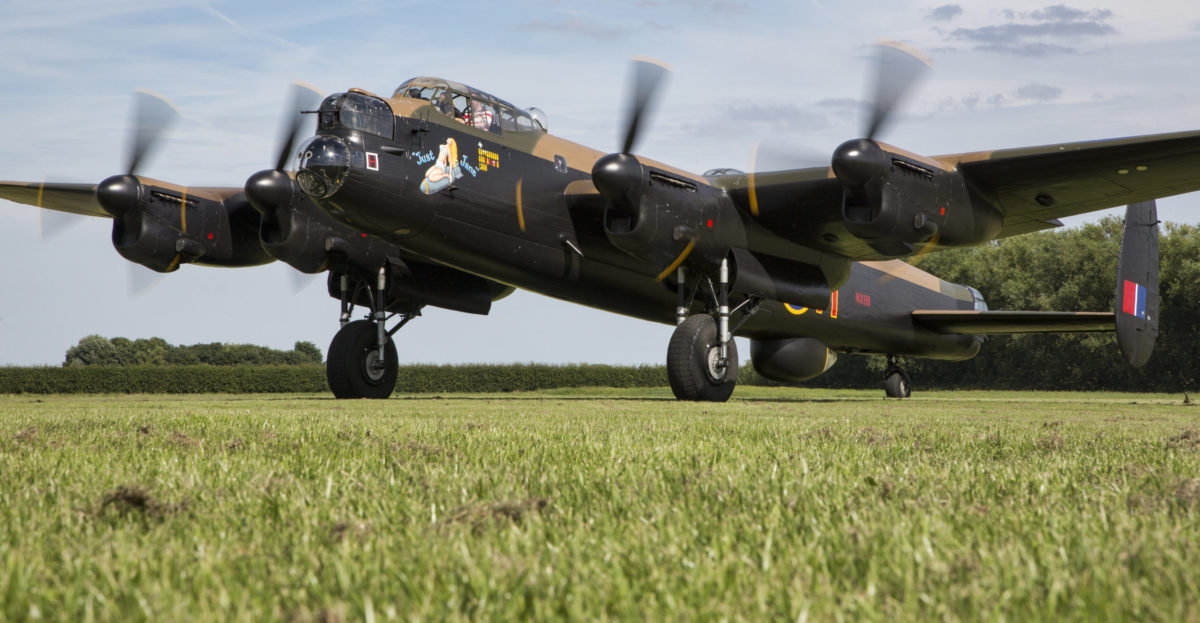Fred and Harold Panton created the Lincolnshire Aviation Heritage Centre in East Kirby, Lincolnshire, to honor the memory of their brother Christopher, who died in an Avro Lancaster bomber during a raid over Nuremberg in 1944. At the heart of this family-owned historic aircraft collection is Just Jane, a Lancaster in the middle of an extensive restoration to get it back to flight status.
Built in April 1945 by Austin Motors in Birmingham, the Lancaster, tail number NX611, was intended for service in the Far East, but the British eventually sold it to the Aéronautique navale (French naval aviation) instead. In 1964, the four-engine bomber returned to the United Kingdom, where the Historical Aircraft Preservation Society flew it for several years. With operating costs climbing, the society put the Lancaster up for auction in 1972. The Pantons placed a bid but were unsuccessful. The Lancaster failed to reach its reserve price, but a private deal led to a new mission as the gate guardian at Royal Air Force Scampton airfield.

The Pantons finally succeeded in purchasing NX611 in 1983. They named the bomber Just Jane after a comic strip from the war years and made it the centerpiece of their growing museum. Ten years later, they started returning Just Jane to operational taxiing standard. That involved a total restoration of the airframe as well as considerable work on the airplane’s four 1,640-hp Rolls-Royce Merlin engines. The engine work alone required 700 hours of labor, at a cost of around $9,400.
In 2017, the museum launched a new 10-year program to restore the Lancaster to airworthy status. It will cost about $4 million and require a complete overhaul, which means checking every part—including the radome, fuel tanks, control surfaces, engine cowlings, bomb bay doors and instrument panels—and the replacement of all the rivets. By November 2019, the starboard tail fin, rudder, engine subframes and all four propellers had been removed, inspected and replaced.
The Lancaster’s engines were adequate for taxiing but required replacement before a return to the air was possible. The museum had one but needed to purchase and overhaul three more at a cost of $168,000 each. “The next step was to work out the logistics and make sure we had all the knowledge, drawings and spares,” said museum director Andrew Panton. “We received old drawings and spar jigs from the RAF—we knew they would fit because our Lancaster had provided the measurements. During 2016/2017 we worked on obtaining spares. I flew to Alberta, Canada, to obtain three-and-a-half engines’ worth of spares, as well as four aircraft worth of undercarriage pieces. We had nine propeller blades come from Tampa, Florida. We bought new tires from Dunlop, who have the largest aircraft tires in production.”

One of the museum’s supporters purchased a box of Lancaster instruments and gauges on eBay. “The box came over from Ireland in the post,” Andrew said. “The pieces were covered in radio luminescent paint, which came up as radioactive when scanned in the post, so they had to be totally unpacked and repacked before we could have them.” When the seller learned why the museum wanted the instruments, he said that his father had flown Lancasters during the war. “He had a company called Mass Aviation and offered to do the paintwork,” Andrew says. That meant removing four or five layers of paint, and an additional eight to ten layers on the roundels. “It took them 12 days to do the paint stripping.”
There was also some corrosion under the wings that required attention. The task of stripping, cleaning and painting Just Jane took 1,680 hours and required 270 gallons of paint stripper, 100 rolls of masking tape, 2,000 sheets of polythene, 5½ gallons of green paint, 3 gallons of dark earth paint, 16 gallons of black paint and 21 gallons of primer.
Between November 2019 and April 2020, the restoration team had planned to focus on the rearmost fuselage section, from the rear turret to the first transport joint, at an estimated cost of $161,000. During that period, the plan was to service all the engines, remove the rear turret and do a full restoration of the rear fuselage—but then COVID-19 put all the work on hold. As a result, restoration of the rear fuselage and wings has only just begun.

Winter is the time for restoration work. During the rest of the year the Panton family helps raise money for the restoration with Taxy Rides, when paying customers can take a ground-based ride in the Lancaster. Each Taxy Ride experience takes 45 minutes, with about 15 of them spent riding in the airplane. Participants can sit in the rear turret, middle turret, radio operator’s seat, navigator’s seat, cockpit or bombardier’s position. “Taxiing helps to provide restoration funds,” Andrew says. “It takes place from May to November each year, and there are about 60 days taxiing involved—about 120 journeys in all. There are nine or 10 people onboard in the cockpit and other areas of the aircraft, about 1,200 people each year. They get a tour onboard, see the different points where the crew would have been placed, then the engines are revved up and the plane taken around the grassy airfield. It is a very dramatic sight. People are very enthusiastic. Often they have family links to the Lancasters with family members having flown in them during the war. We often get people coming who still remember them.”
During the summer the museum has five full-time engineers and three control staff working on Just Jane for the Taxy Rides. When restoration starts up for the winter months, it takes the services of eight full-time engineers and five volunteers. The museum remains very much a family affair. Andrew is Fred’s grandson. (Fred died in 2013.) His sister Louise also works at the center as the museum curator and a guide on Just Jane.
“The collection has been built up over the years, some things we have acquired and there have also been donations from veterans who could see that the items would be well cared for here,” says Andrew. “We aim for displays that complement the aircraft we have on site such as a Mosquito, Hampden and a Bristol Blenheim.” Before long, hopefully, they will have an airworthy Lancaster as well.






